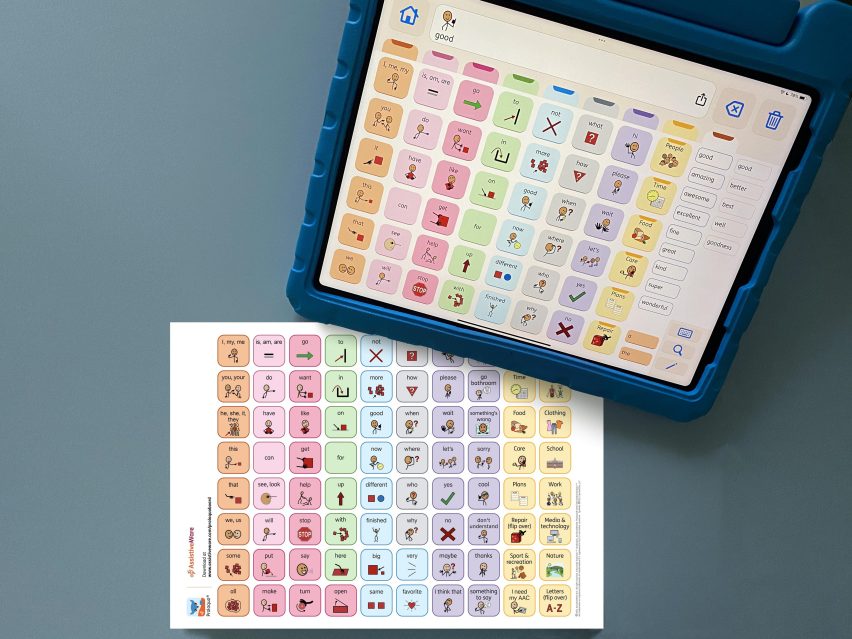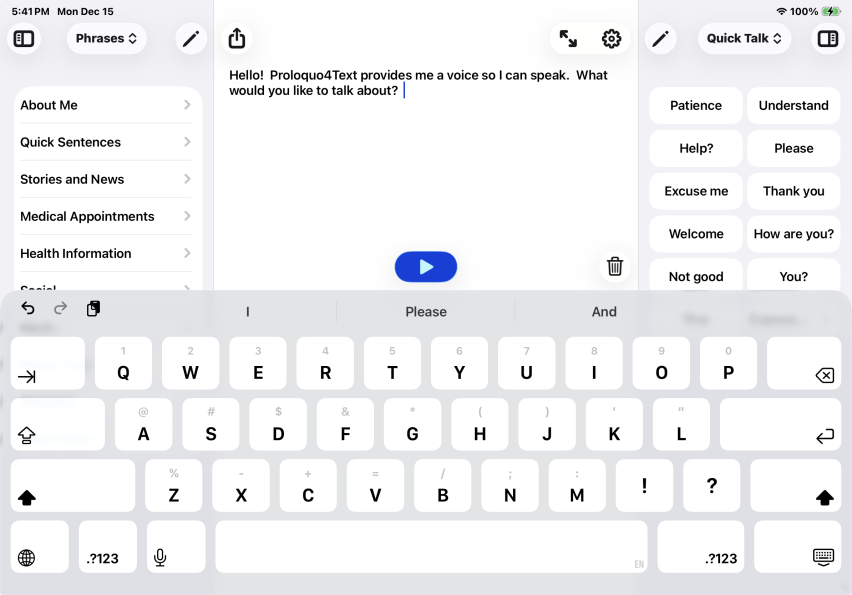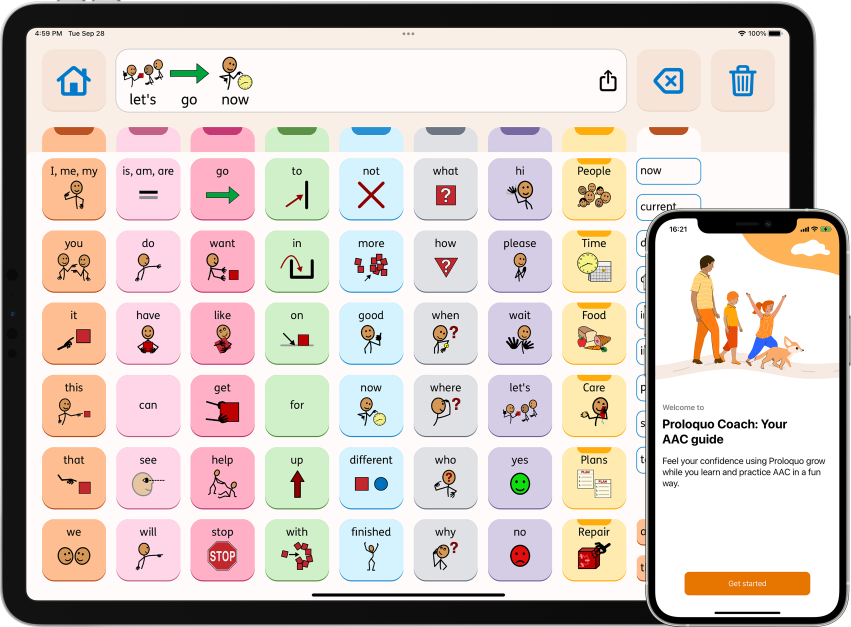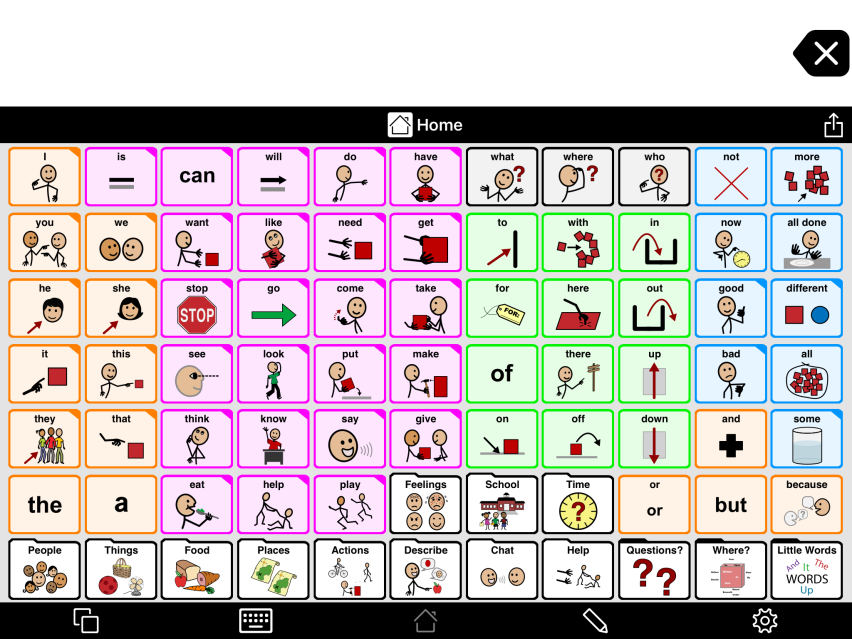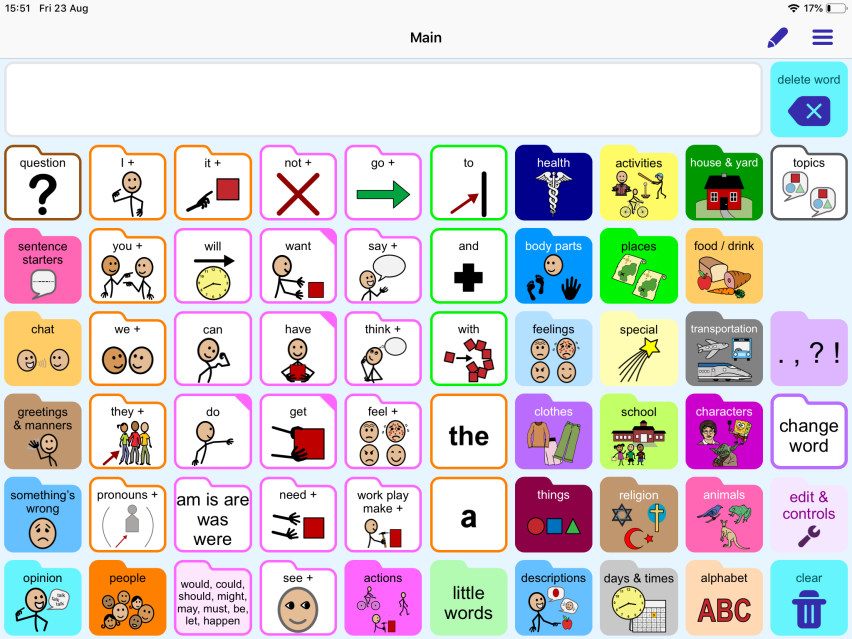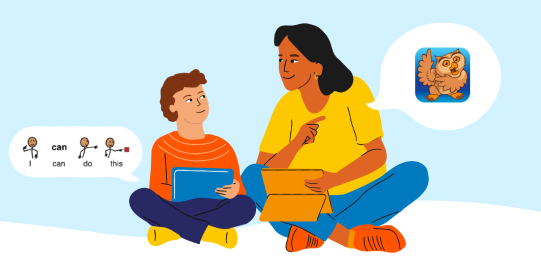AAC stands for Augmentative and Alternative Communication. It refers to tools and strategies that support or replace speech for people with communication difficulties. AAC can be unaided (like gestures or facial expressions) or aided (like picture boards or speech-generating devices).
What is Augmentation and Alternative Communication?
Communication devices, systems, strategies and tools that replace or support spoken language are known as augmentative and alternative communication (AAC). These tools support a person who has difficulties communicating using speech.
The first “A” in AAC stands for Augmentative Communication. When you augment something, you add to it or supplement. Augmentative communication is when you add something to your speech (eg. sign language, pictures, a letter board). This can make your message clearer to your listener.
The second “A” in AAC stands for Alternative Communication. This is when you are not able to speak. It is also when your speech is not understood by others. In this case, you need a different way to communicate.
Basically, AAC can be tools, systems, devices or strategies. These tools help a person communicate, when they cannot rely on speech. Perhaps your child has not started talking. Perhaps you have lost your ability to speak. Perhaps your speech comes and goes. Maybe speaking is harder than other ways to communicate. AAC can help.
Who is AAC for and how does it help?
There are many reasons why a person may not be able to communicate using speech. They may have a developmental disability which has affected the development of speech. They may have an acquired disorder that has affected the person’s ability to speak. Many people with different communication difficulties, speech impediments and disorders can benefit from AAC.
AAC finders may help discover who could use AAC, using the AAC finders checklist.
Communicating without speech is difficult. People who do not speak are at a disadvantage in a speaking world. It can be confusing and frustrating when messages cannot be given effectively. This is frustrating for both the nonspeaking person and their communication partner.
When a person is not able to speak, others often make judgements about their competence, potential, and ability to think and learn. AAC helps support nonspeaking people to express the thoughts they want to communicate.
Types of AAC are often used?
AAC incorporates all the tools and strategies a person can use to communicate, when they are not able to speak. Often we break them into 2 groups: Unaided and Aided AAC.
1. Unaided AAC – AAC that does not require a physical aid or tool.
- Facial expressions
- Body language
- Gestures
- Sign language
2. Aided AAC – AAC that uses tools or materials.
- Symbol boards
- Choice cards
- Communication books
- PODD books
- Keyboards and alphabet charts
- Speech-generating devices or communication devices
- AAC apps on mobile devices
We may use a high-tech tool (e.g. a Speech Generating Device, or AAC app on an iPad), or a light-tech/paper-based tool (e.g. a communication book, or board).

